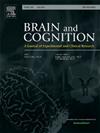快速周期性视觉刺激和多样化刺激下的面部表情加工研究
IF 1.4
3区 心理学
Q3 NEUROSCIENCES
引用次数: 0
摘要
面部表情识别是人类社会互动的一个基本方面,使有效的沟通和情感理解成为可能。快速周期视觉刺激(FPVS)范式是近年来研究面部表情处理的有力方法。然而,先前的研究通常使用相同的基础刺激,这使得很难将低水平感知差异的神经反应与反映情感概念歧视的神经反应区分开来。通过引入刺激的可变性,我们的目标是克服这些限制,研究神经对愤怒、恐惧、快乐和悲伤面部表情的反应。通过脑电图,在个体和群体水平上观察到参与者的强烈古怪反应,即使是简短的记录和有限的后处理,也证明了范式的敏感性。在关键的感兴趣区域检测到显著的神经反应,枕叶和右枕颞叶区域显示出增加的活动,与先前调查面部表情处理的研究一致。本研究强调了FPVS范式在使用自然刺激检查情绪处理方面的有效性,并为未来研究不同病理人群面部情绪识别的神经机制提供了框架。本文章由计算机程序翻译,如有差异,请以英文原文为准。
Exploring facial expression processing with fast periodic visual stimulation and diverse stimuli
Facial expression recognition is a fundamental aspect of human social interaction, enabling effective communication and emotional understanding. Fast Periodic Visual Stimulation (FPVS) paradigms have recently emerged as a powerful approach for studying facial expression processing. However, previous studies often utilized identical base stimuli, making it difficult to disentangle neural responses to low-level perceptual differences from those reflecting conceptual discrimination of emotion. By introducing variability in our stimuli, we aimed to overcome these limitations and investigate neural responses to facial expressions of anger, fear, happiness, and sadness. Using EEG, robust oddball responses were observed across participants at both individual and group levels, demonstrating the paradigm’s sensitivity even with brief recordings and limited post-processing. Significant neural responses were detected across key regions of interest, with the occipital and right occipito-temporal regions showing increased activity, consistent with previous studies investigating facial expression processing. This study highlights the effectiveness of the FPVS paradigm for examining emotional processing using naturalistic stimuli and provides a framework for future research into neural mechanisms underlying facial emotion recognition in diverse and pathological populations.
求助全文
通过发布文献求助,成功后即可免费获取论文全文。
去求助
来源期刊

Brain and Cognition
医学-神经科学
CiteScore
4.60
自引率
0.00%
发文量
46
审稿时长
6 months
期刊介绍:
Brain and Cognition is a forum for the integration of the neurosciences and cognitive sciences. B&C publishes peer-reviewed research articles, theoretical papers, case histories that address important theoretical issues, and historical articles into the interaction between cognitive function and brain processes. The focus is on rigorous studies of an empirical or theoretical nature and which make an original contribution to our knowledge about the involvement of the nervous system in cognition. Coverage includes, but is not limited to memory, learning, emotion, perception, movement, music or praxis in relationship to brain structure or function. Published articles will typically address issues relating some aspect of cognitive function to its neurological substrates with clear theoretical import, formulating new hypotheses or refuting previously established hypotheses. Clinical papers are welcome if they raise issues of theoretical importance or concern and shed light on the interaction between brain function and cognitive function. We welcome review articles that clearly contribute a new perspective or integration, beyond summarizing the literature in the field; authors of review articles should make explicit where the contribution lies. We also welcome proposals for special issues on aspects of the relation between cognition and the structure and function of the nervous system. Such proposals can be made directly to the Editor-in-Chief from individuals interested in being guest editors for such collections.
 求助内容:
求助内容: 应助结果提醒方式:
应助结果提醒方式:


